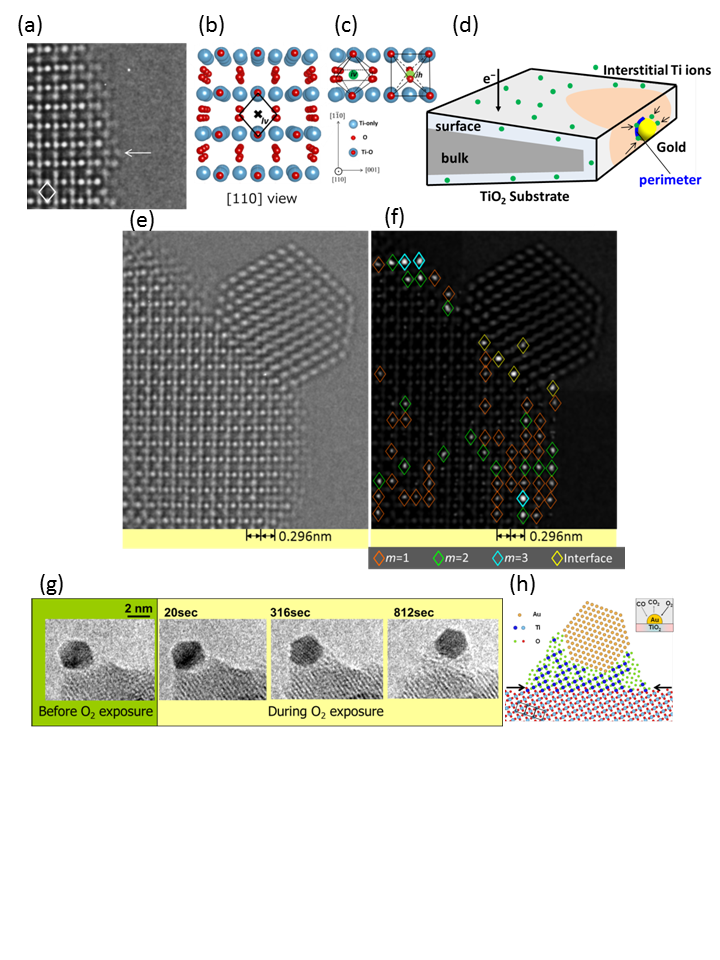IT-6-P-2220 TEM Imaging of CO Oxidation Catalyst of Gold Nanoparticle on TiO2 in CO and O2 Environments
Gold nanoparticle on TiO2 (Au/TiO2) is promising for application to a low temperature CO oxidation (2CO+O2→2CO2) catalyst [1-4]. It is reported that the catalytic reaction proceeds at a peripheral region of the Au/TiO2 interface [1, 4]. It is proposed that the catalysis emerges from a negatively charged O2 molecule (O2–) [1, 4], which is generated by Au-Ti co-bonding [4] and/or interstitial Ti ion [5]. We have studied the structure and electronic states of Au/TiO2 by using advanced TEM techniques [2, 3].
Interstitial Ti ions in a TiO2 substrate with and without a gold nanoparticle were observed by aberration corrected TEM [3]. Interstitials of Iv sites were observed at TiO2(001) surface as shown in Fig. 1(a) (a). Interstitials were accumulated at a perimeter/interface of Au/TiO2, while interstitials were depressed in a peripheral area of the accumulated region. A specific phase, which seems an expansion of the interstitial-accumulated region, was observed at the edge of the Au/TiO2 interface [2]. The specific phase grew extensively by exposing to O2 gas at 100 Pa into a pillar which has a chemical composition of Ti1-xO2 (x > 0) in Fig.1 (g). We will discuss report the CO oxidation catalysis.
[1] M. Haruta, et al., J. Catal. 144 (1999) 175.
[2] T. Tanaka, et al., Surf. Sci. 604 (2010) L75.
[3] T. Tanaka et al., Surf. Sci. 619 (2014) 39.
[4] Z.-P. Liu, X.-Q. Gong, J. Kohanoff, C. Sanchez, and P. Hu, Phys. Rev. Lett. 91 (2003) 266102.
[5] S. Wendt et al., Science 320 (2008) 1755.
The presentworkwas supported by a Grant-in-Aid for Scientific Research (A) (No. 16201020) and Exploratory Research (No. 24656031) of Japan Society for the Promotion of Science (JSPS). We thank Associate Professor N. Yamamoto (Tokyo Institute of Technology) for his valuable comments and stimulating discussion.

Fig. 1: (a) |